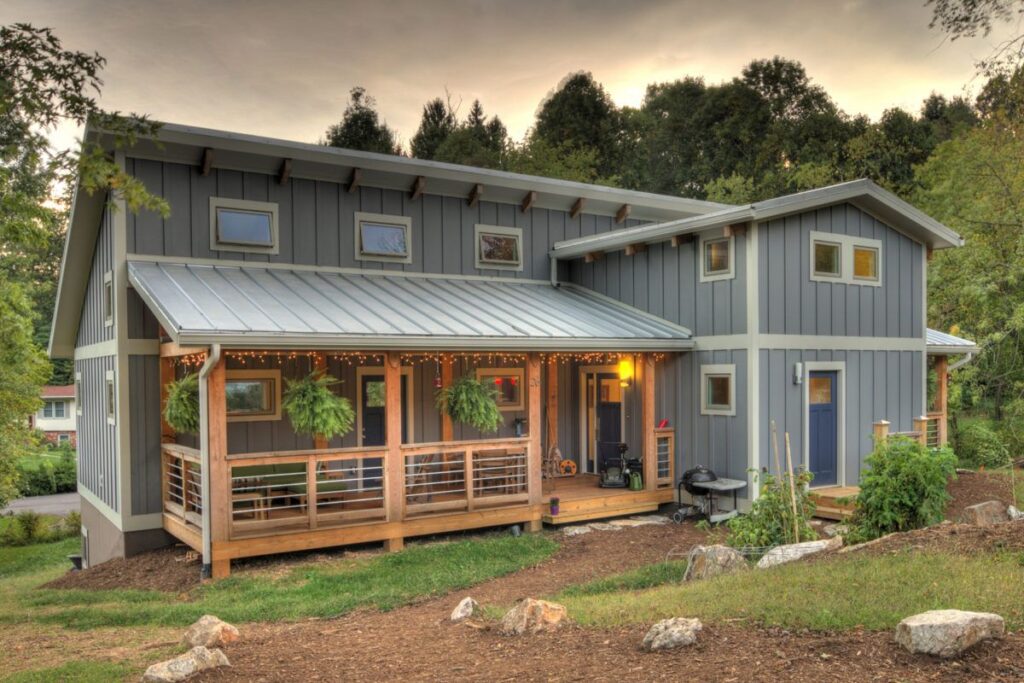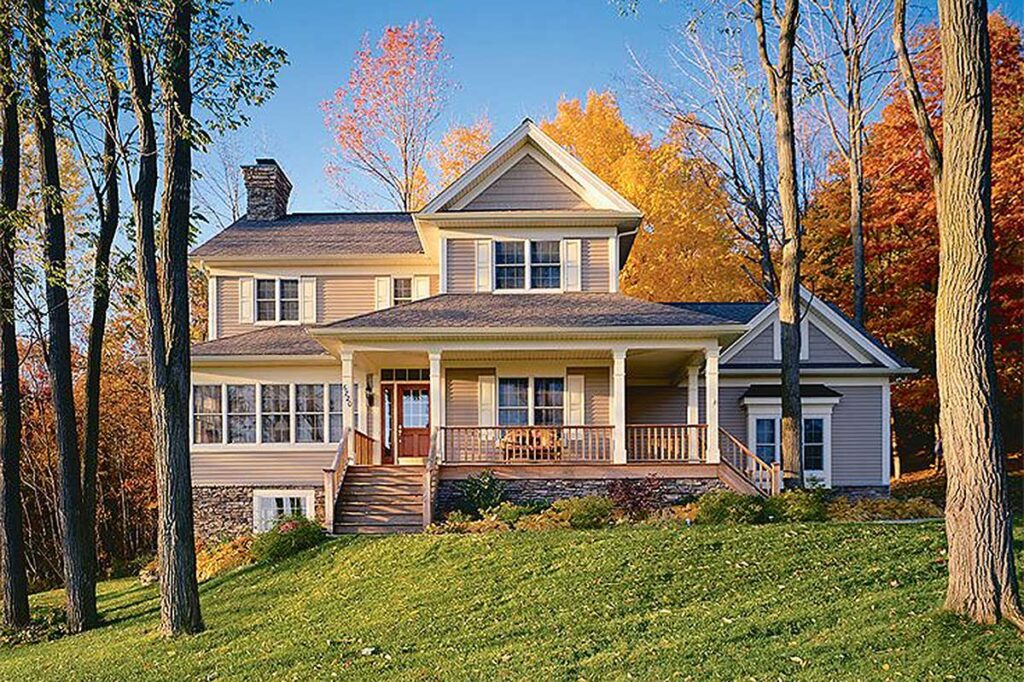In the epoch of climate consciousness, the spotlight is increasingly turning towards sustainable living. Net zero energy buildings, particularly farmhouses, have emerged as pioneers in fostering a green future. One notable advocate for such ecological initiatives is none other than Bill Gates, whose residence serves as a testament to innovation and eco-friendly design. In this exploration of Net Zero Farmhouse Plans, we delve into the principles that guide sustainable design, with occasional insights from the green practices observed in Bill Gates’ house.
Bill Gates’ Green Blueprint
Sustainable Homesteading Revolution
Green Tech Residences
Holistic Living Spaces
Eco-Luxury Retreats
The Essence of Net Zero Farmhouse Plans:
Net zero farmhouses represent a paradigm shift in residential architecture, emphasizing a harmonious coexistence with the environment. The primary objective is to ensure that the energy consumed by the farmhouse is entirely offset by the energy it generates, resulting in a neutral or net-zero impact on the grid.
Bill Gates, a stalwart in the tech industry, has also left an indelible mark in the realm of sustainable living. His house stands as an exemplar of cutting-edge design and green technologies, offering inspiration for those looking to tread the path of net zero living.
Energy-Efficient Design:
The design of a net zero farmhouse is a meticulous process that prioritizes energy efficiency. This involves strategic placement of windows to maximize natural light, insulation to regulate temperature, and the use of energy-efficient appliances.
Bill Gates’ residence epitomizes this commitment to energy efficiency, integrating technologies that optimize heating, cooling, and lighting systems to minimize energy wastage.
Smart Home Technologies:
Net zero farmhouses often embrace smart home technologies, offering residents the ability to monitor and control energy consumption. Automated systems for climate control, lighting, and energy management play a pivotal role in enhancing overall efficiency.
Bill Gates‘ home, characterized by its state-of-the-art features, underscores the importance of intelligent technologies in the pursuit of sustainability. These technologies not only enhance comfort but also contribute to the reduction of energy consumption.
Sustainable Building Materials:
The selection of sustainable building materials is a cornerstone of net zero farmhouses. From recycled wood to eco-friendly insulation, every material is chosen with a focus on minimizing environmental impact.
Drawing from the ethos of Bill Gates’ house, which features modern and sustainable design elements, net zero farmhouse planners can prioritize materials that align with ecological principles.
Water Conservation Strategies:
Net zero farmhouses extend their commitment to sustainability beyond energy to water conservation. Rainwater harvesting, efficient irrigation systems, and low-flow fixtures are integral components in minimizing water consumption.
Bill Gates, an advocate for responsible water use, has incorporated similar strategies in his residence, highlighting the importance of holistic sustainability in net zero living.

Sustainable Building Materials:
The selection of sustainable building materials is a cornerstone of net zero farmhouses. From recycled wood to eco-friendly insulation, every material is chosen with a focus on minimizing environmental impact.
Drawing from the ethos of Bill Gates’ house, which features modern and sustainable design elements, net zero farmhouse planners can prioritize materials that align with ecological principles.
Water Conservation Strategies:
Net zero farmhouses extend their commitment to sustainability beyond energy to water conservation. Rainwater harvesting, efficient irrigation systems, and low-flow fixtures are integral components in minimizing water consumption.
Bill Gates, an advocate for responsible water use, has incorporated similar strategies in his residence, highlighting the importance of holistic sustainability in net zero living.
Renewable Energy Systems:
The integration of renewable energy systems is non-negotiable in net zero farmhouse plans. Solar panels, wind turbines, and other sustainable energy sources should be tailored to the specific needs of the site.
Emulating Bill Gates’ use of solar panels, incorporating renewable energy systems not only ensures self-sufficiency but also contributes to the reduction of greenhouse gas emissions.
Energy-Efficient Appliances and Lighting:
Opting for energy-efficient appliances and lighting fixtures is a fundamental step in minimizing the carbon footprint of a net zero farmhouse. LED lighting, Energy Star-rated appliances, and programmable thermostats should be integral to the design.
Learning from the practices observed in Bill Gates’ house, where advanced technologies enhance energy efficiency, farmhouse planners should prioritize the incorporation of these elements for a truly sustainable living experience.
Innovative Water Management:
Water conservation is paramount in the journey towards sustainability. Net zero farmhouse plans should include innovative water management strategies, such as rainwater harvesting, greywater recycling, and efficient irrigation systems.
Taking a cue from Bill Gates’ commitment to water-related initiatives, incorporating innovative water management practices ensures a holistic approach to sustainability, addressing not only energy but also water conservation.
Community Engagement:
Net zero living extends beyond the confines of individual residences. Emphasizing community engagement and education can amplify the impact of sustainable practices. Sharing experiences, knowledge, and resources with neighbors fosters a collective commitment to a greener future.
Bill Gates, a proponent of global health and environmental initiatives, exemplifies the significance of community engagement in creating a sustainable world. Farmhouse planners should consider ways to inspire and involve their communities in the pursuit of net zero living.
FAQ:
Q: What is an environmental sustainability plan?
Ans: An Environmental Sustainability Plan is a comprehensive strategy designed to identify and manage environmental sustainability issues. It outlines a set of actions, objectives, and goals to reduce the negative impacts of an organization’s activities on the environment.

Conclusion:
Embracing net zero farmhouse plans is not just about constructing buildings; it’s about shaping a sustainable future. By prioritizing eco-friendly materials, renewable energy, and innovative design, we’re not only creating homes but also contributing to a greener tomorrow. Let’s continue to champion sustainability in our construction practices, paving the way for a brighter, more environmentally conscious future.